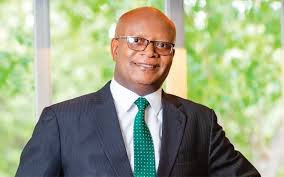
Money speaks in a language all nations understand, said British playwright, author and translator Aphra Behn. Closer home, Reserve Bank of Zimbabwe (RBZ) governor John Mangudya would have said bond coins speak the language understood by Zimbabweans.
BY NDAMU SANDU
Since the introduction of the coins in December last year to buttress the multi-currency regime, the coins have managed to gain market confidence despite initial resistance.
The coins are in the denominations of 1c, 5c, 10c, 25c and 50c and are at par with the US$. They are meant to promote and enhance price competitiveness.
But it has not been smooth sailing for the coins as there were fears that government was using them as a precursor to the reintroduction of the Zimbabwean dollar.
“The rejection of the coins in the early stages emboldened us as we were convinced that what we were doing is right. The message was clear: try to reintroduce the local unit and we will reject,” a senior RBZ executive said. A survey by Standardbusiness showed that eight months on, the new coins have gained market confidence aided by the weakening rand and the decommissioning of the Zimbabwean dollar.
“Though I accept rands, I prefer bond coins because I can take them to any supermarket and buy with them and operators do not use the ruling exchange rate, without suffering any losses,” said Tendai, a mobile fruit vendor along Jason Moyo Avenue.
“Where we buy our stuff, $1 is equivalent to R12, so if I get bond coins that’s better.” Confederation of Zimbabwe Retailers chairman Denford Mutashu said last week that the coins had solved challenges of change and divisibility.
- Chamisa under fire over US$120K donation
- Mavhunga puts DeMbare into Chibuku quarterfinals
- Pension funds bet on Cabora Bassa oilfields
- Councils defy govt fire tender directive
Keep Reading
“Bond coins are found in smaller denominations that allow transactions to take place. Before that, it was difficult to price products and in the end retailers ended up overcharging, for example if a commodity was $0,87, one was forced to price at $1,” he said.
One of the characteristics of money is that it has to be divided into smaller units that can be used in exchange for goods of varying amounts.
Since the use of the multiple currency regime in 2009, government failed to ensure that smaller coins were in place. Then Finance minister Tendai Biti said government was going to import coins from the US. The plan was abandoned after it emerged that it was more expensive to import the coins than the notes.
Mutashu said retailers had faced resistance at the outset but managed to convince consumers to accept the coins. “It was difficult to convince the general public on the back of the Zimbabwean dollar which was rendered useless. As retailers, we played an integral part to tell consumers that the coins were at par with the US dollar. We felt it was incumbent upon us to educate consumers to accept them,” he said.
Mutashu said the decommissioning of the Zimbabwean dollar boosted confidence, erasing consumer scepticism that the local unit would be revived.
The Zimbabwean dollar is being retired from the formal system. The demonetisation exercise began on June 15 and will end on September 30.
Under the demonetisation process, bank account holders with balances of up to Z$175 quadrillion are being paid a flat $5.
Account holders with balances above Z$175 quadrillion would be paid the equivalent value after applying the UN exchange rate of $1 per Z$35 quadrillion or $1:Z$35 000 (revalued).
Consumer watchdog, the Consumer Council of Zimbabwe (CCZ) said the introduction of bond coins has resulted in the decrease in the food basket to $127,84 last month from $140,50 in January.
CCZ executive director Rosemary Siyachitema said the reduction in prices fits with RBZ’s calls for companies to adjust prices and enhance competitiveness.
Mangudya said in April that bond coins would ensure that locals obtained the real value of the significant currency in circulation, the US dollar.










